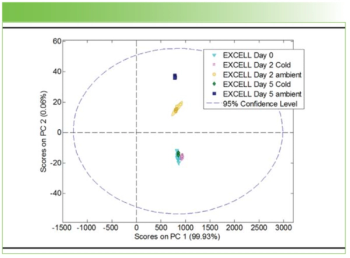
LIBS for the Rapid Elemental Imaging of Nuclear Fuel
During a talk at the Winter Conference on Plasma Spectrochemistry, a scientist from the Oak Ridge National Laboratory shared how his team is using laser induced breakdown spectroscopy to analyze TRISO particles.
During a presentation at the Winter Conference on Plasma Spectrochemistry, Hunter Andrews, an R&D associate at the Oak Ridge National Laboratory (ORNL) spoke about advanced nuclear fuel analysis. Andrews and his team at the ORNL have been experimenting with the use of laser induced breakdown spectroscopy (LIBS) for rapid elemental imaging of surrogate tri-structural isotropic (TRISO) particles for nuclear reactors.
LIBS is a form of atomic spectroscopy that determines the elemental composition of materials using a laser pulse to create a micro-plasma on the surface of a sample, allowing the analysis of its elemental composition based on the emitted light spectrum. This spectrum is collected using an emission spectrometer. The resulting spectral lines are analyzed to identify and quantify the elements present in the sample based on their unique emission wavelengths. LIBS is a commonly used technique for solid nuclear fuel analysis in the energy industry.
“We can use LIBS as a technique to save us analytical time to locate regions of interest,” Andrews said. “Then look using higher resolution sensitivity.”
TRISO particles are the “most robust nuclear fuel on Earth” made up of uranium, carbon, and oxygen, according to the
LIBS, however, can analyze the sample surface and detect elements including carbon and oxygen, which can make it a useful method for analyzing small, multilayered particles, the team
“The versatility of LIBS sensitivity and its speed allow for high throughput measurements,” Andrews said.
References
- TRISO Particles: The Most Robust Nuclear Fuel on Earth. https://www.energy.gov/ne/articles/triso-particles-most-robust-nuclear-fuel-earth (accessed 2024-01-15).
- Manard, B. T.; Andrews, H. B.; Quarles, C. D.; et al. Exploration of LIBS as a Novel and Rapid Elemental Mapping Technique of Nuclear Fuels in the Form of Surrogate TRISO Particles. J. Anal. At. Spectrom. 2023, 38 (7), 1412–1420. DOI:10.1039/d3ja00034f.
Newsletter
Get essential updates on the latest spectroscopy technologies, regulatory standards, and best practices—subscribe today to Spectroscopy.





